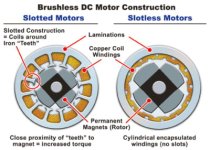Hummina Shadeeba
1 MW
mxlemming said:I've got an idea...
Why don't you go and pedal really really hard for 20 minutes, and see what gets hot? If it is the iron, it's Eddie currents. If it's the suspension forks and tires it is the cogging transmitting vibrations into the frame. If nothing gets hot, pedal harder.
i thought you said strongly it wasnt eddies and i had misunderstood you. if the iron is getting hot i believe it could be either eddies or hysteresis no?
will a slotless hub motor being pedaled produce the same heat as the cogging slotted at the same speed and duration? maybe the grin simulator potentially can show that




